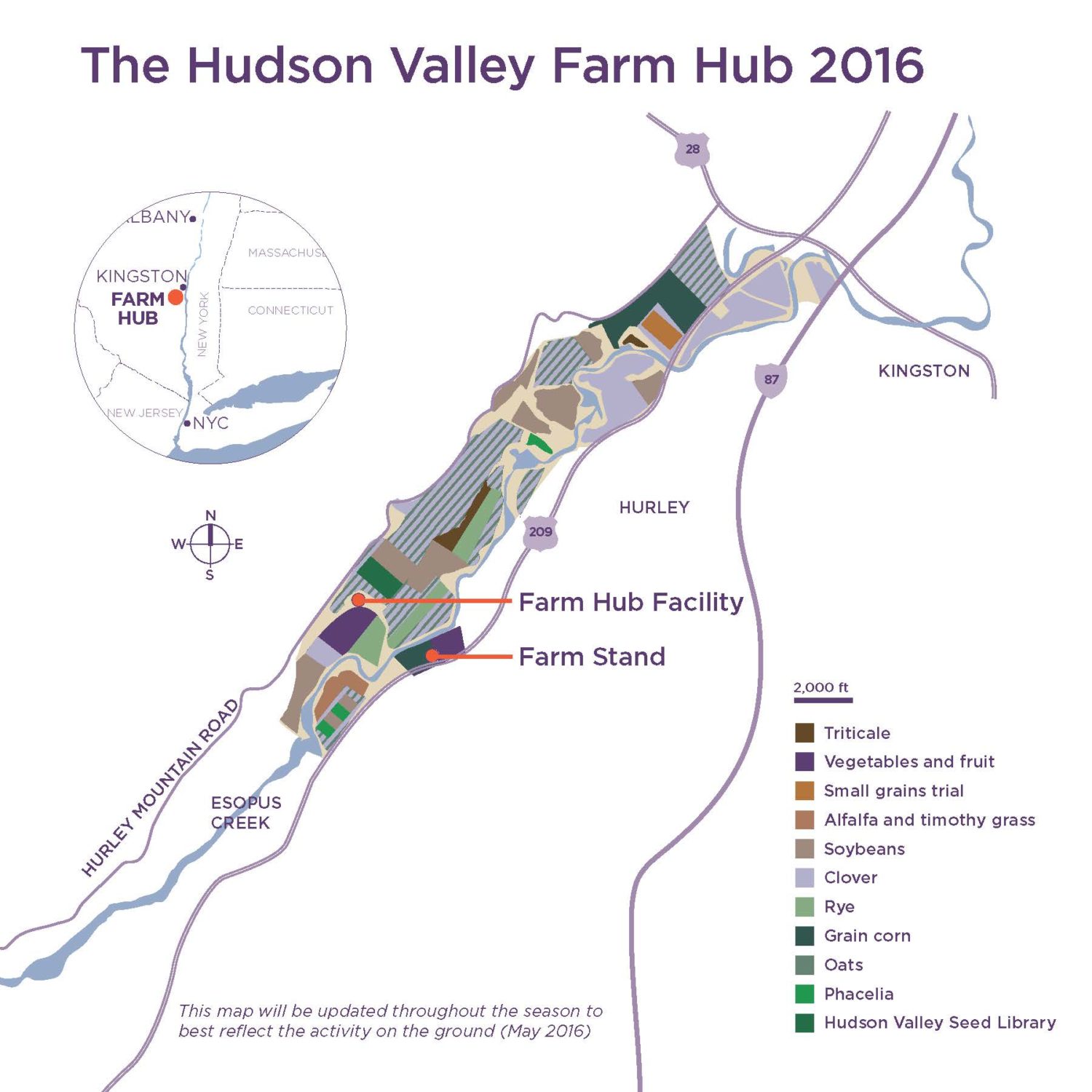What's Growing 2016
The 2016 growing season marks the launch of the Farm Hub’s ProFarmer Training Program, and this year’s crop plan is reflective of our newest educational initiatives and our commitment to demonstrating ecological farming practices. Many of this year’s activities, from soil restoration and weed control to vegetable wholesale training and market research, will provide opportunities for farmers to visit, engage in our work, and learn about organic growing methods and land management tools being implemented at the Farm Hub.
Building on projects initiated over the past few years, our 2016 crop plan takes the Farm Hub’s work into exciting new areas. With the launch of our ProFarmer training program and a full series of farmer outreach events scheduled for the season, 2016 promises to be a bountiful, and educational, year.
Click here to see the 2016 growing season map.
Click here to see the 2015 growing season map.
Click here to see 2014 growing season map.
Vegetable Enterprises and the Market Garden
The Farm Hub’s 2016 crop planning process included both market research and a review of our production objectives. For our vegetable crops, we began by speaking with more than a dozen wholesale food buyers around the region to learn what types are in demand but difficult to source locally. During the 2016 season we will test a selection of these, including cole crops (broccoli and cauliflower), legumes (edamame and green beans), root crops (carrots, parsnips, and sweet potatoes), and sweet corn, for wholesale marketability. By tracking in detail the costs associated with growing these crops organically and at scale, we can assess their viability as promising areas of expansion for Hudson Valley farmers. In this way, we hope to increase the diversity of food available locally and provide growers with information that can help strengthen their capacity in the wholesale market.
These four “vegetable enterprises” form the basis of this year’s ProFarmer training program. Our first three farmer trainees joined us in April and, working alongside our experienced farm crew, will be concentrating on these vegetable enterprises in concert with the season’s progression: from crop planning to budgeting, growing methods, harvesting, and marketing.
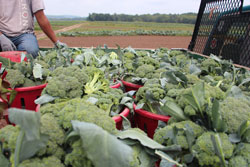 Broccoli & Cauliflower – Many buyers in the Hudson Valley have told us they have trouble locating large quantities of locally grown broccoli. In addition, we understand that it can be difficult to meet the desired head size for cauliflower in wholesale markets. Through demonstrating reliable organic growing practices and consistent supply, we are exploring wholesale opportunities in the regional market for area farmers.
Broccoli & Cauliflower – Many buyers in the Hudson Valley have told us they have trouble locating large quantities of locally grown broccoli. In addition, we understand that it can be difficult to meet the desired head size for cauliflower in wholesale markets. Through demonstrating reliable organic growing practices and consistent supply, we are exploring wholesale opportunities in the regional market for area farmers.
Root Crops: Carrots and parsnips were grown on the Farm Hub in 2015 as part of a variety trial with Cornell Cooperative Extension Eastern New York Commercial Horticulture Program (ENYCHP).
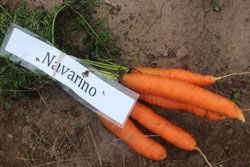 This trial will be enhanced this year with a new host of varieties and improved storage capability made possible with the renovation of the Farm Hub’s cold storage facility. We will now be adding sweet potatoes to our root crop enterprise, based on feedback from local buyers. Because they grow late into the fall and store well, these root crops can allow farmers to extend their growing season and generate income in winter months. Crops like these can also expand options for farm workers who wish to work a longer season or remain in place year-round. We will be co-hosting a twilight meeting with ENYCHP at the Farm Hub at end of the summer to share this year’s trial results.
This trial will be enhanced this year with a new host of varieties and improved storage capability made possible with the renovation of the Farm Hub’s cold storage facility. We will now be adding sweet potatoes to our root crop enterprise, based on feedback from local buyers. Because they grow late into the fall and store well, these root crops can allow farmers to extend their growing season and generate income in winter months. Crops like these can also expand options for farm workers who wish to work a longer season or remain in place year-round. We will be co-hosting a twilight meeting with ENYCHP at the Farm Hub at end of the summer to share this year’s trial results.
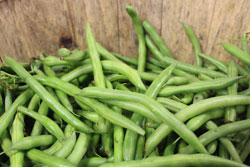 Edamame & Green Beans: Because these two legumes use the same harvesting and sorting machinery, they make a logical pair for farmers with access to the right equipment. Edamame is growing in popularity across the country, and yet few domestic farms currently grow these particular soybeans. That is not without reason – edamame seeds can be finicky. If planted too deep, or if there is too much rain after planting, the seeds will rot instead of germinate. In fact, this was the case with some of the 2015 edamame planting at the Farm Hub. By experimenting with this difficult crop, we will be gaining the expertise Hudson Valley farmers will need to grow edamame successfully. In particular, we will be testing two different varieties of edamame and mechanically harvesting them to test whether we can lower production costs. We then will explore opportunities for freezing the finished product and testing it with regional buyers for quality, flavor, and price.
Edamame & Green Beans: Because these two legumes use the same harvesting and sorting machinery, they make a logical pair for farmers with access to the right equipment. Edamame is growing in popularity across the country, and yet few domestic farms currently grow these particular soybeans. That is not without reason – edamame seeds can be finicky. If planted too deep, or if there is too much rain after planting, the seeds will rot instead of germinate. In fact, this was the case with some of the 2015 edamame planting at the Farm Hub. By experimenting with this difficult crop, we will be gaining the expertise Hudson Valley farmers will need to grow edamame successfully. In particular, we will be testing two different varieties of edamame and mechanically harvesting them to test whether we can lower production costs. We then will explore opportunities for freezing the finished product and testing it with regional buyers for quality, flavor, and price.

Sweet corn: Gill Farms was well known throughout New York State for its sweet corn, and this crop is an important part of the Farm Hub’s history and our local heritage. As the Farm Hub transitions to organic growing practices, our approach to growing sweet corn is evolving as well. This year we started plants in the greenhouse in the spring and transplanted them to fields in May. This technique allows for better weed control and an earlier start to the season. In May and June we will also be directly seeding sweet corn into the fields. The first sweet corn will be available at our Farm Stand in July.
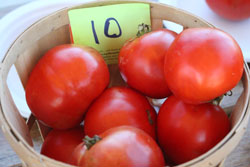 Also taking place in the market garden will be the tomato variety trial. This trial, coordinated by ENYCHP, is part of an ongoing breeding program to develop tomato lines with resistance to three highly destructive plant diseases: late blight, early blight, and septoria leaf spot. Ten new lines of tomatoes are being developed by Martha Mutschler of Cornell University, with a continued focus on fruit quality and consumer appeal. The availability of new tomato varieties will help New York farmers avoid yield loss from disease and allow them to meet market demand.
Also taking place in the market garden will be the tomato variety trial. This trial, coordinated by ENYCHP, is part of an ongoing breeding program to develop tomato lines with resistance to three highly destructive plant diseases: late blight, early blight, and septoria leaf spot. Ten new lines of tomatoes are being developed by Martha Mutschler of Cornell University, with a continued focus on fruit quality and consumer appeal. The availability of new tomato varieties will help New York farmers avoid yield loss from disease and allow them to meet market demand.
Overall, our market garden this season will include nearly 100 varieties of vegetables grown for the Farm Stand.
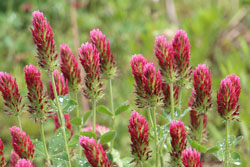 Cover Crops, Soybeans, and Grains
Cover Crops, Soybeans, and Grains
Cover cropping is an important tool in ecological farming, helping to build organic matter in the soil and improve soil structure. Cover crops are planted and then worked into the ground before they set seed. By leaving the organic matter in the field, the soil builds carbon, which allows it to retain water much more efficiently. This means it is less likely to be washed away in extreme weather events and is more resilient during dry periods. Carbon-rich soils are also an excellent tool for adapting to and mitigating climate change.
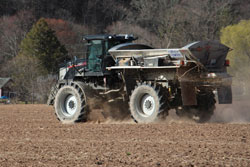 Cover crops on the farm this season include phacelia, red clover, crimson clover, rye, triticale, vetch, alfalfa, and timothy. Triticale and rye will once again play a role in the Farm Hub’s no-till organic soybean production. Having grown back after this mild winter, the triticale and rye will be rolled and crimped, after which non-GMO soybeans will be planted in the same field. The cover crop, left in the field as mulch, will create a straw mat to suppress weeds and return organic matter to the soil as the soybeans grow. With 2015 harvests that rivaled those of conventional corn and soy in our area, and with the premium that organic and “transitional” (i.e. grown using organic methods but not yet officially certified as organic) corn and soybeans can demand on the market, no-till corn and soy appear to offer an excellent business opportunity for Hudson Valley farmers.
Cover crops on the farm this season include phacelia, red clover, crimson clover, rye, triticale, vetch, alfalfa, and timothy. Triticale and rye will once again play a role in the Farm Hub’s no-till organic soybean production. Having grown back after this mild winter, the triticale and rye will be rolled and crimped, after which non-GMO soybeans will be planted in the same field. The cover crop, left in the field as mulch, will create a straw mat to suppress weeds and return organic matter to the soil as the soybeans grow. With 2015 harvests that rivaled those of conventional corn and soy in our area, and with the premium that organic and “transitional” (i.e. grown using organic methods but not yet officially certified as organic) corn and soybeans can demand on the market, no-till corn and soy appear to offer an excellent business opportunity for Hudson Valley farmers.
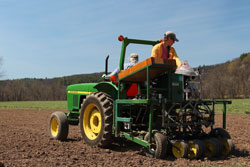 Small Grains Research
Small Grains Research
Our small grains field trials enter their third year in 2016. We are working in conjunction with Cornell University and Cornell Cooperative Extension of Ulster County to evaluate small grain varieties. These include barley, rye, oats, and wheat. End-user testing with our partners at Wild Hive Grain Mill and Bread Alone Bakery over the winter provided important initial feedback for evaluating the quality of each variety for milling and baking. This spring, small plots of spring grains were planted along with larger grow-outs of AAC Synergy barley and Tom, a hard red spring wheat.
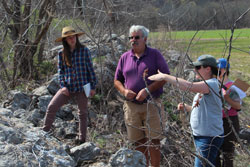 Ecological Land Management
Ecological Land Management
Since the 2015 season we have working to identify potential synergies between the Farm Hub and its surrounding natural environment. This season we will be collaborating with partners to develop a comprehensive plan focused specifically on flood risk on the farm. To protect against erosion and loss of topsoil, flood-prone areas will be planted with cover crops like oats, clover, alfalfa, and phacelia during the 2016 season, or in some cases left fallow. In coming years we will be exploring a variety of approaches to managing riparian zones on the farm while monitoring costs and benefits of these and other natural systems land management solutions.

